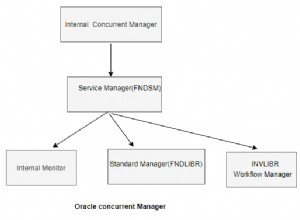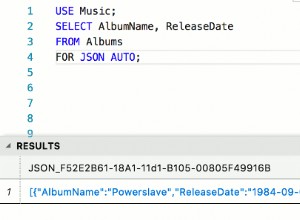Najbliższą rzeczą do przecięcia tablic jest to:
select array_agg(e)
from (
select unnest(a1)
intersect
select unnest(a2)
) as dt(e)
Zakłada się, że a1 i a2 to tablice jednowymiarowe z elementami tego samego typu. Możesz to ująć w funkcję podobną do tej:
create function array_intersect(a1 int[], a2 int[]) returns int[] as $$
declare
ret int[];
begin
-- The reason for the kludgy NULL handling comes later.
if a1 is null then
return a2;
elseif a2 is null then
return a1;
end if;
select array_agg(e) into ret
from (
select unnest(a1)
intersect
select unnest(a2)
) as dt(e);
return ret;
end;
$$ language plpgsql;
Wtedy możesz zrobić takie rzeczy:
=> select array_intersect(ARRAY[2,4,6,8,10], ARRAY[1,2,3,4,5,6,7,8,9,10]);
array_intersect
-----------------
{6,2,4,10,8}
(1 row)
Zauważ, że nie gwarantuje to żadnej konkretnej kolejności w zwróconej tablicy, ale możesz to naprawić, jeśli Ci na tym zależy. Następnie możesz utworzyć własną funkcję agregującą:
-- Pre-9.1
create aggregate array_intersect_agg(
sfunc = array_intersect,
basetype = int[],
stype = int[],
initcond = NULL
);
-- 9.1+ (AFAIK, I don't have 9.1 handy at the moment
-- see the comments below.
create aggregate array_intersect_agg(int[]) (
sfunc = array_intersect,
stype = int[]
);
A teraz widzimy, dlaczego array_intersect robi zabawne i nieco niezdarne rzeczy z wartościami NULL. Potrzebujemy wartości początkowej dla agregacji, która zachowuje się jak zestaw uniwersalny i możemy do tego użyć wartości NULL (tak, to trochę brzydko pachnie, ale nie mogę wymyślić nic lepszego poza czubkiem głowy).
Gdy to wszystko będzie gotowe, możesz zrobić takie rzeczy:
> select * from stuff;
a
---------
{1,2,3}
{1,2,3}
{3,4,5}
(3 rows)
> select array_intersect_agg(a) from stuff;
array_intersect_agg
---------------------
{3}
(1 row)
Niezupełnie prosty lub wydajny, ale może rozsądny punkt wyjścia i lepszy niż nic.
Przydatne referencje:
array_agg- utwórz agregat
- utwórz funkcję
- PL/pgSQL
unnest




